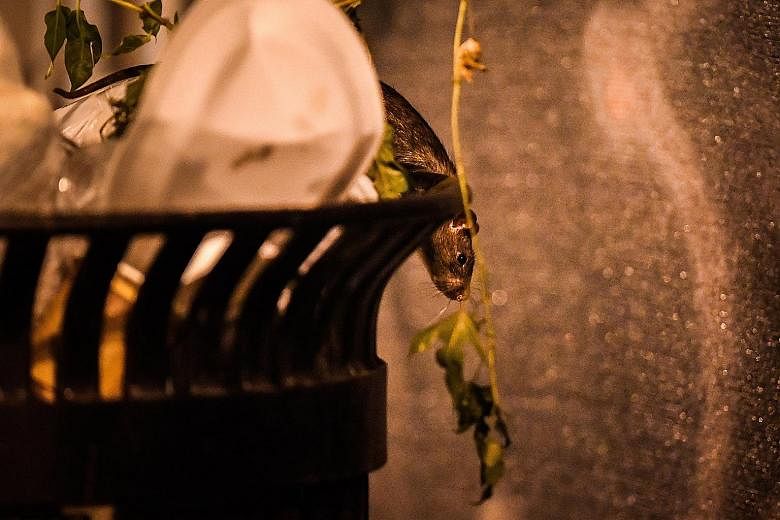WASHINGTON • Mr Nate Brown got married in a small town in Spain on July 1. When he returned home to Washington, he realised he had a problem as soon as he entered his house in the Park View neighbourhood. "It ate through all our food," he said. "Literally, all of it." The culprit, Mr Brown knew, was a rat.
Like many north-eastern cities, the United States' capital has long struggled with rodents. But the problem has now reached record levels, driven by a combination of factors including the growing numbers of new restaurants and bars that have produced more trash. Recent mild winters mean fewer rats die from frigid temperatures. Construction across the city has also disrupted subterranean burrows, sending the creatures scurrying onto sidewalks and into homes.
Complaints to the city's phone line concerning rats are at a four-year high. There have been 3,286 calls this fiscal year, up 64 per cent from fiscal year 2015, according to data from the health department."Even one rat is one rat too many," said Mr Gerard Brown, programme manager for the health department's rodent control division.
Mr Gerard Brown said the recent uptick is noticeable.The more trash produced, the more often rats would appear, he added. That is why trash control has become a priority in the city, where the number of restaurants and bars jumped about 30 per cent from 1,729 in 2006 to 2,267 in 2016, according to the Bureau of Labour Statistics.
The capital has taken several steps aimed at decreasing the rodent population, including the installation of state-of-the-art solar trash cans in "rat hot spots" at an annual cost of US$85,000 (S$114,300) and offering grants to businesses that want to lease a commercial trash compactor.
The 25 solar-powered cans compact trash so it does not overflow and spill onto the sidewalks, providing a buffet of rotting treats for rats.
The city has also launched a pilot programme that dispersed 400 trash cans with lids and sensors that alert the Department of Public Works when the cans need to be emptied.
Solving the city's rat problem, city officials and national experts agree, requires preventing the spread of rodents, especially through trash control, rather than concentrating strictly on extermination. It is too soon to tell whether the city's efforts are working, but Mr Gerard Brown said he is confident they will make a dent.
WASHINGTON POST

